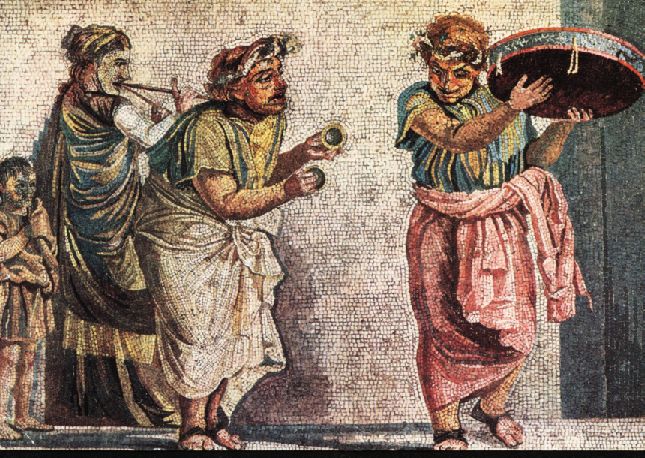

The rural population and slaves under the leadership of Aristonic opposed the rule of the Romans. In another region of the empire, Asia Minor also came into being. Slaves working in Attica in the silver mines in the Laurion Mountains also broke up there. Within the Aegean Sea, a second great outbreak of rebellion was created.

The situation was aggravated by a failed operation to suppress the rebellion in Sicily. At various points in Italy, slaves began preparing an uprising, which threatened to completely paralyze the state. This unexpected surge of the lowest social strata in Rome alarmed senators. The stronghold Enna was chosen as the capital of the country, perfectly located, mainly due to its defensive qualities. The rural poor also joined the rebellion unexpectedly, which allowed the insurgents to take over most of the island. The insurgents formed a kingdom in parts of Sicily, in which Eunus became the king. The rebels were commanded by two Greeks: Eunus and Kleon. It is likely that the first slave uprising broke out in Sicily among shepherd slaves in 136 BCE. Living in primitive conditions, they began to organize themselves into small armed groups invading nearby settlements. This situation existed not only in Italy but also in other provinces in which the slave trade was clearly developed (Hellenistic East or Sicily). They did not receive any supplies from the owner, as a result of which their flocks supplied them with meat and clothing. Agricultural slaves, especially patera, were the worst-treated category of the stratum. At the same time, however, the owners took care of their health, taking into account the costs of another subordinate.Īt the end of the 2nd century BCE, the situation began to aggravate in Roman society. Sometimes the owner handed the culprit to the officials involved in the organization of the games, and then the poor man was thrown to the circus arena by wild animals to be eaten. In the most serious offences, he was sentenced to death by crucifixion. The slave, wholly dependent on the master, could be punished with the greatest severity. In general, slave owners treated them, you could say as talking tools, not like ordinary people. For comparison, slaves employed in agriculture, especially cattle ( familia rustica) were the worst offenders.Ī slave’s family was relatively difficult, but sometimes the aristocrats agreed if they knew the slave was a trusted employee. An extremely talented grammar teacher could cost up to 700,000 sesterces. And so, for example, they ran libraries or rewrote books. It also happened that they were entrusted with more responsible positions. Usually they were employed as carers and tutors of their masters’ sons, teachers and secretaries. A good position for a slave was also enjoyed by those employed in the homes of the rich ( familia urbana), such as chefs, hairdressers and educators. Athenian slaves, who run, for example, a craft workshop, had some freedom, provided that they gave the owner a certain sum of money from all the influence. In the “slave society” there was a clear difference in life, depending on the profession they were engaged in.
#Rome instrumenta vocalia slave license#
On Creative Commons Attribution license - On the same terms 3.0. Cato the Elder was to claim: “A slave of his was expected either to be busy about the house, or to be asleep, and he was very partial to the sleepy ones” 1. Former patriarchal slavery evolved into productive slavery, in which the profit from the slave’s work became significant. According to the Romans, the slave was simply an insignificant object that could be replaced if necessary. First, it did not have to be paid unlike small-scale peasants, moreover, you did not have to answer for his death. As I mentioned, the benefits of having a slave in plots of land began to be noticed. Such a huge demand for slaves was mainly caused by the development of the latifundial economy and the creation of huge landed estates. This activity was mainly carried out by privateers in the Mediterranean, and sometimes even Romans. The huge demand for this social layer has led to the creation of a new profession, engaged in the hunt for people. Over time, however, the slave became a commodity, a thing ( nullius) that could be bought on the market. So far, the main source of the influx of slaves was war. The turning point in the concept of slavery turned out to be the turn of the 3rd and 2nd centuries BCE. Rome’s contacts with Africa and Far East.


 0 kommentar(er)
0 kommentar(er)
